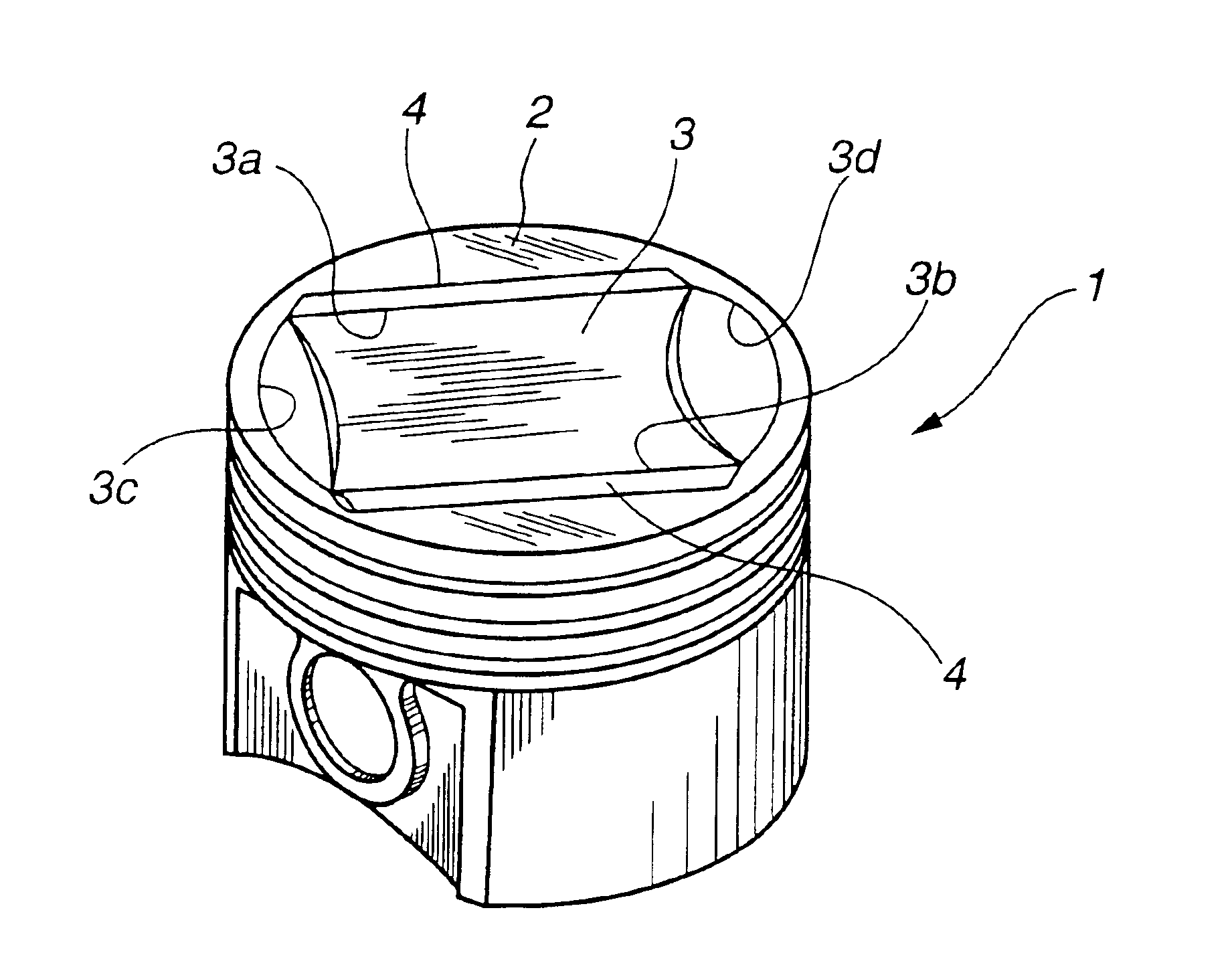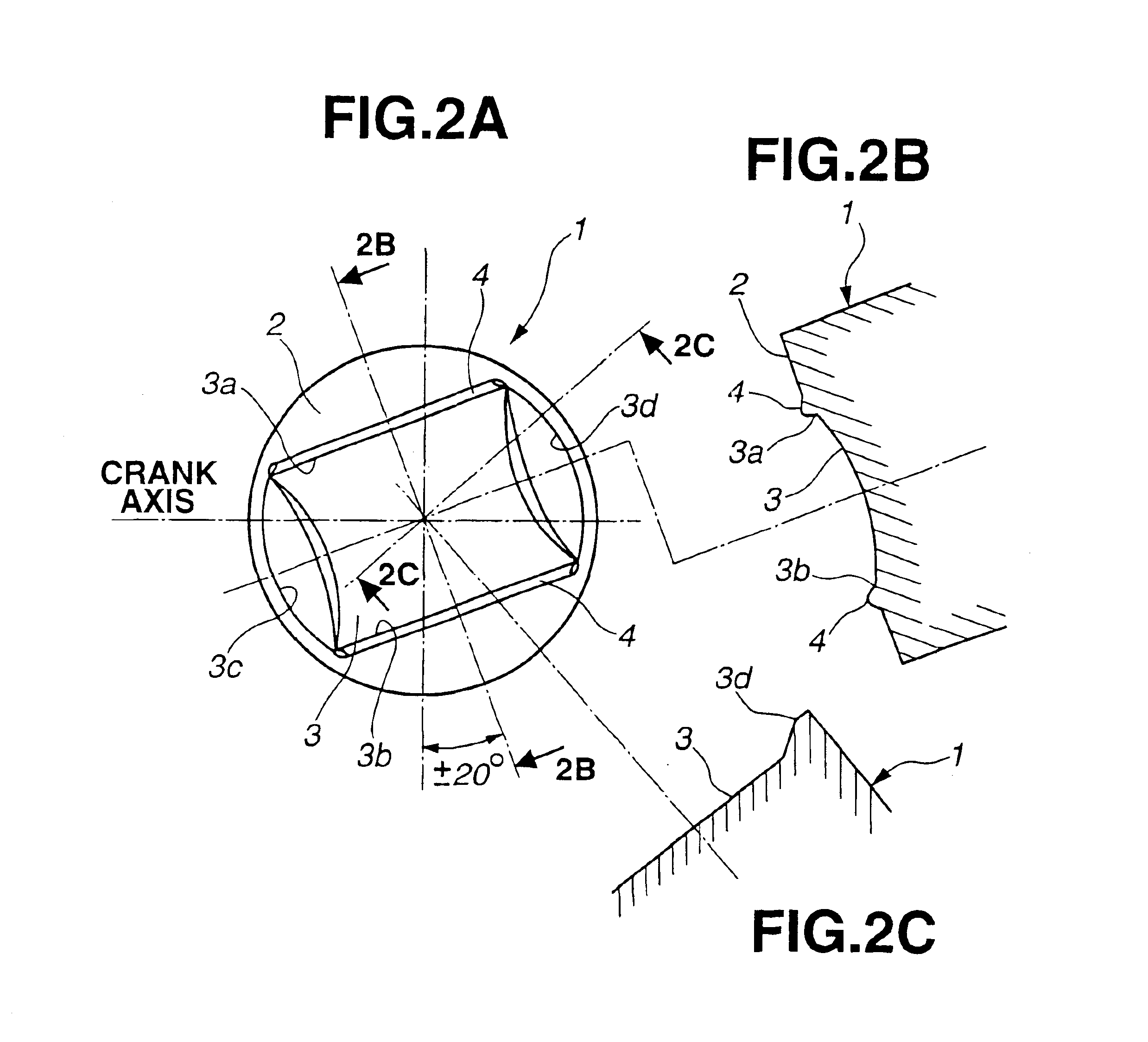Piston for an internal combustion engine
- Summary
- Abstract
- Description
- Claims
- Application Information
AI Technical Summary
Benefits of technology
Problems solved by technology
Method used
Image
Examples
Embodiment Construction
Referring first to FIGS. 1 and 2, a piston that reciprocates within a cylinder of an internal combustion engine is generally indicated by 1. The piston 1 has a crown 2 that is formed with a cavity 3 at a top face or crown face thereof.
The cavity 3 has at the crown face of the crown 2 an open end consisting of parallel, straight longitudinal side edges 3a, 3b and part-circular edges 3c, 3d connecting between the opposite ends of the side edges 3a, 3b, respectively. The side edges 3a, 3b are parallel to a center axis that forms 20° with a crank axis and diametrically opposed in a way as to be nearly equidistant from the center of the crown face of the crown 2 (i.e., the center axis of the piston 1) and have terminal ends located adjacent the circumferential periphery of the piston 1.
Namely, the cavity 3 is formed so as to have a longitudinal direction or longitudinal center axis that forms 20° with a crank axis or an axis of a piston pin (not shown).
Further, the bottom of the cavity 3...
PUM
 Login to View More
Login to View More Abstract
Description
Claims
Application Information
 Login to View More
Login to View More - R&D
- Intellectual Property
- Life Sciences
- Materials
- Tech Scout
- Unparalleled Data Quality
- Higher Quality Content
- 60% Fewer Hallucinations
Browse by: Latest US Patents, China's latest patents, Technical Efficacy Thesaurus, Application Domain, Technology Topic, Popular Technical Reports.
© 2025 PatSnap. All rights reserved.Legal|Privacy policy|Modern Slavery Act Transparency Statement|Sitemap|About US| Contact US: help@patsnap.com



